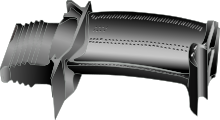Lawrence Rippon
New member
LEICESTER UK
- Aircraft Year
- 1977
- Aircraft Type
- 112B
- Reg Number
- G-BEPY
- Serial Number
- 524
You may have heard that all of Western Europe and Scandinavia are closed to IFR Traffic and in some countries to VFR as well. There is a cloud of volcanic ash drifting over from Iceland.
With almost no experience of this in Europe, I thought I'd ask those of you who have to deal with this phenomenon on a more regular basis what the dangers are.
Currently the cloud is sitting around 6,000' to FL25 and is extremely dispersed we are some 900 miles from the eruption and cannot see any visible sign of the VA. We are under a notam that says VFR operations with piston aircraft should exercise extreme caution.
Controlled airspace is empty at the moment and GA has taken over. The weather here is perfect and the wind has all but disappeared. There are GA aircraft using the ILS at Manchester and Gatwick for practice, the controllers at Birmingham were so pleased to hear from me yesterday that they kept me on frequency for a bit of a chat. Usually these places don't want to bother with GA. Needless to say most GA is staying at around 2000'
So the question is... What concentration of VA is bad for a Commander. We have air filters, which I checked yesterday and are as clean as new, so if there are hundreds of successful GA flights taking place when should we get worried?
Also... Do you think it is an over reaction to ban all commercial traffic at these concentrations, no one seems to have any definitive data.
The last time this volcano erupted it went on for 2 years, this would devastate the economy, not to mention putting a cramp on my flying.
With almost no experience of this in Europe, I thought I'd ask those of you who have to deal with this phenomenon on a more regular basis what the dangers are.
Currently the cloud is sitting around 6,000' to FL25 and is extremely dispersed we are some 900 miles from the eruption and cannot see any visible sign of the VA. We are under a notam that says VFR operations with piston aircraft should exercise extreme caution.
Controlled airspace is empty at the moment and GA has taken over. The weather here is perfect and the wind has all but disappeared. There are GA aircraft using the ILS at Manchester and Gatwick for practice, the controllers at Birmingham were so pleased to hear from me yesterday that they kept me on frequency for a bit of a chat. Usually these places don't want to bother with GA. Needless to say most GA is staying at around 2000'
So the question is... What concentration of VA is bad for a Commander. We have air filters, which I checked yesterday and are as clean as new, so if there are hundreds of successful GA flights taking place when should we get worried?
Also... Do you think it is an over reaction to ban all commercial traffic at these concentrations, no one seems to have any definitive data.
The last time this volcano erupted it went on for 2 years, this would devastate the economy, not to mention putting a cramp on my flying.




